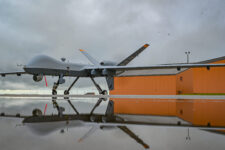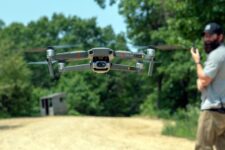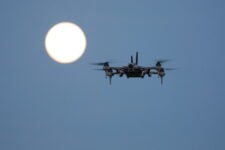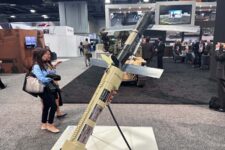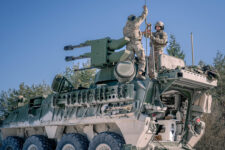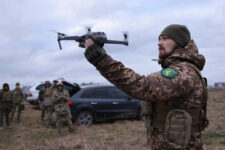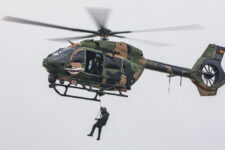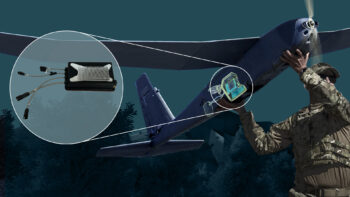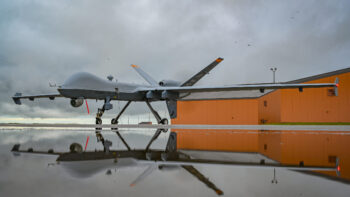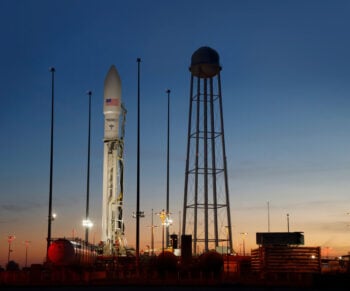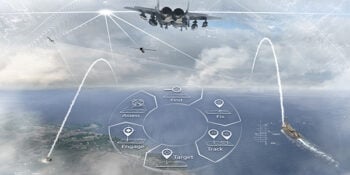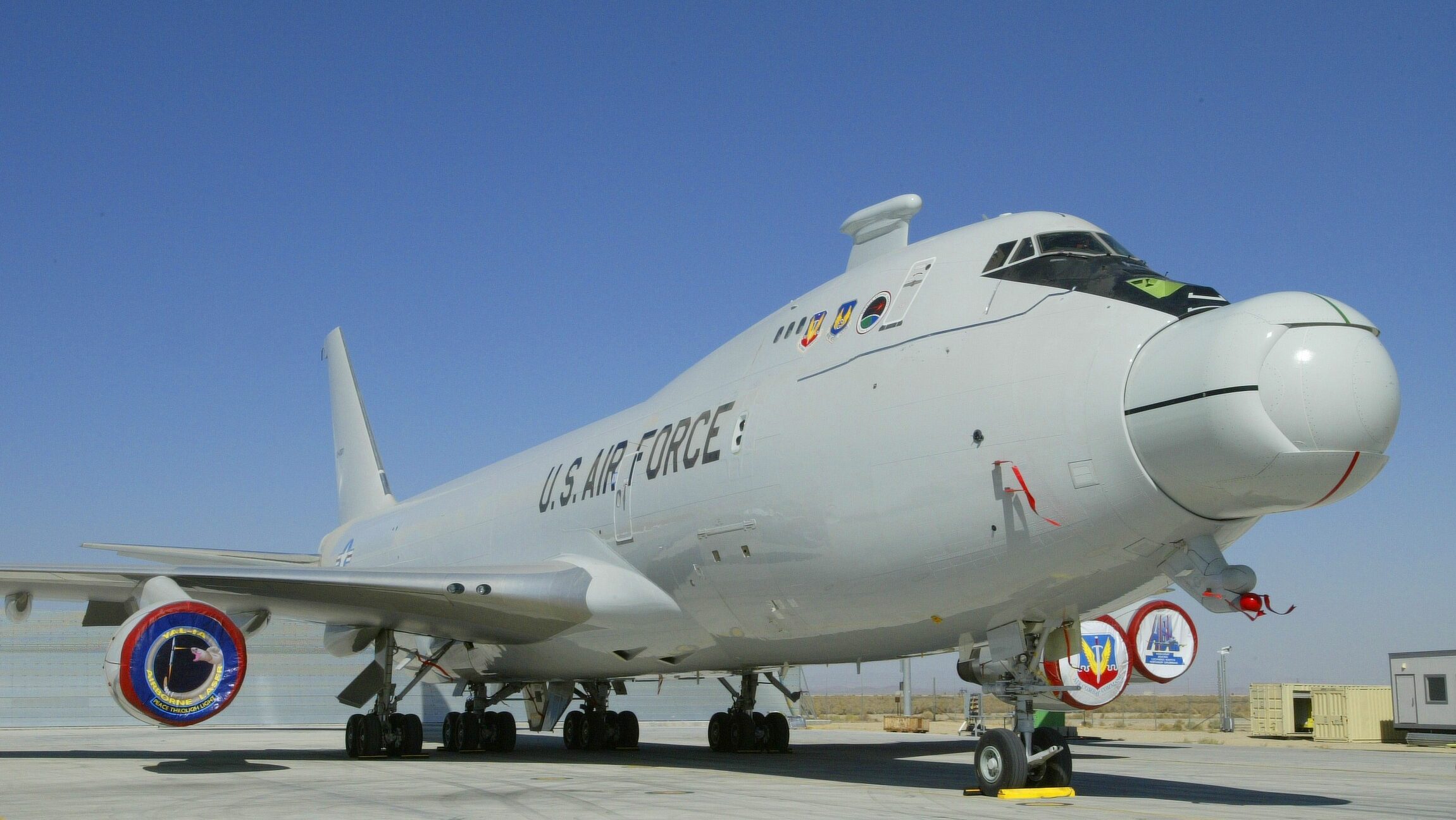
The Airborne Laser Testbed, mothballed in 2012. The Missile Defense Agency is relooking the concept, based on new technology. (MDA photo)
WASHINGTON — Airborne lasers are back in the sights of the Missile Defense Agency — a decade after the first attempt to build a system collapsed, having swallowed 16 years and $5 billion in research and development.
This time, however, MDA is taking things slow. Rather than jumping straight to shooting down missiles in space, the agency is first focusing on using low-powered lasers for tracking and working its way toward higher-powered systems for intercept.
“Tracking characterization work will grow MDA’s capabilities for the use of low-power tracking lasers. The systems associated with this risk reduction work are also directly applicable to more advanced systems, including non-kinetic intercept systems,” an agency spokesperson told Breaking Defense.
“MDA’s approach is to progress technology development and demonstrations for near term missions like tracking while higher power lasers required for the future are in development by [the Pentagon’s Office of Research and Engineering]. MDA and the Department are working toward future directed energy systems which have lower size, weight, and power, to support mobility and maximum proliferation across the battlespace,’ the spokesperson added.
One of the reasons that MDA is focusing on airborne systems, the spokesperson explained, is that such a system could provide advantages for research and development activities over both ground-based and space-based missile defense approaches.
“An airborne directed energy technology demonstrator provides favorable environments and ranges over ground based systems; it provides iterative directed energy technology development flexibility not offered by space based systems,” they said.
MDA Director Lt. Gen. Heath Collins told the Center for Strategic and International Studies on June 6 that the agency asked for $11 million in research and development money to explore airborne laser technology, starting with tracking. The effort builds off of recommendations from an independent team of government, industry and academic experts, he said.
Asked for details about the make up of the study group and the report, the MDA spokesperson said only that the report has been designated Controlled Unclassified Information and will not be released.
New Lasers Open Up New Possibilities
Mark Lewis, who served as the Pentagon’s senior scientist in 2020 and now is CEO of the Purdue Applied Research Institute (PARI), gave MDA a thumbs up for taking a new look at the concept, noting that the technology has come a long way since 2014. Not only are there new power sources for lasers, but also improvements have been made to technologies for beam stabilization and cutting through the Earth’s atmosphere, he explained.
“I would argue that … even though airborne laser was, how do I say this diplomatically, not a success, there’s actually value in going back and revisiting, and asking, ‘Well, have things changed?’ So good on MDA,” he said.
RELATED: Army soldiers not impressed with Strykers outfitted with 50-kilowatt lasers, service official says
“I draw parallels between lasers and hypersonics. And the reason I draw that parallel is they’re both technologies that were promising, promising, promising. It’s just around the corner. People would make fun of it and say, “Yeah, well, you know, it’s the future, and it always will be.’ And [now] finally, it’s like, ‘Oh, wait, we flew something, and it worked’,” he said.
Lewis explained that while the original airborne laser system, based on a Boeing 747, was powered by a plane-full of dangerous chemicals, the lasers currently under evaluation by MDA and the military services for missions such as shooting down drone swarms are solid-state lasers.
“The thing that has changed is we’ve actually realized that that solid-state lasers are the way to go, and not chemical lasers… . That’s number one. Number two is we’ve gotten power levels of those solid-state lasers up to the point where they can actually do some real harm,” he said. “We’re at the power levels now where we can actually blast a hole in something. We can blind something, we can take something out. And we can do it in a package that’s practical.”
Lewis also noted that another change is how the Pentagon is thinking about using lasers — taking a more targeted approach to potential missions.
“If you look at the early thinking about how we would use lasers, it was pretty stupid,” he said, based on trying to “replace the gun with a laser light, [like] Star Wars. … If the gun works, why would you do that? If we’re going to invest in laser, it [ought to be] to do things that the gun doesn’t do, to open up the possibilities. And I think that, that kind of sea change, it seems almost obvious, but it seems to take us a while to get there.”
All that said, Lewis stressed that there is still a way to go to get to the point where laser systems can be used routinely to shoot ballistic missiles, hypersonic missiles or drone swarms.
“As we’ve seen with hypersonics, we we still haven’t kind of cracked the nut, the engineering nut, to make it feasible,” he said.
Hezbollah, Houthis downing of drones challenges Israel, US air superiority
“Israel and the United States will need to gradually adjust their operating procedures,” said Bruce Bennett, senior adjunct international defense researcher at RAND Corporation.
